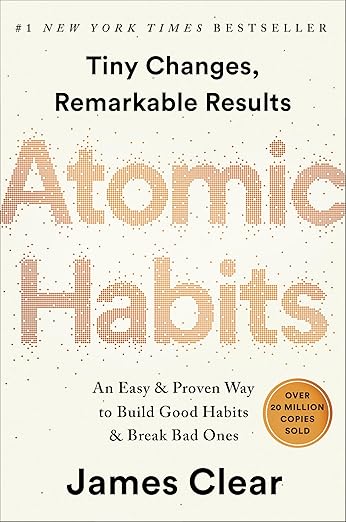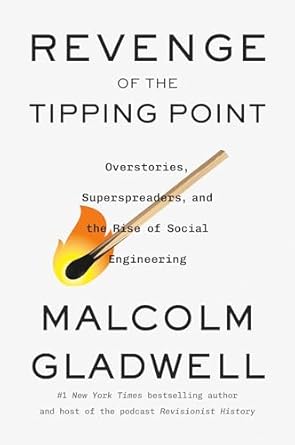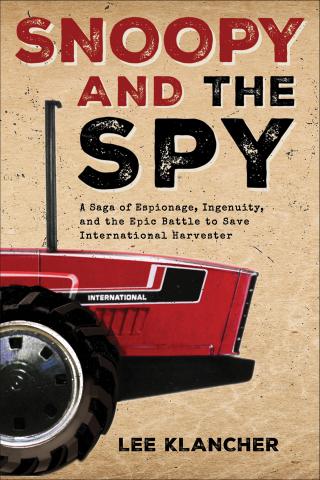By Bill Spiegel, Byline Editor
“Read more books” is one of America’s top New Year’s Resolutions, according to the website GoSkills. It’s a noble goal and one most of us probably wish we could easily adopt. So the crackerjack review team here at the ACN Byline has chosen some of our favorite reads from recent months. Some are older titles; others are new. But they each struck a chord with one of us.
Whether you enjoy books on paper, audiobooks or books on an electronic device, here is a list of some books you may want to check out in 2025.
And just a quick note: while we have links to Amazon on most of these books, please consider buying from a local bookseller or checking them out from your local library.
1. Atomic Habits, by James Clear. An easy and proven way to build good habits and break bad ones is the subtitle of this 320-page book, and that sounds like a good idea to me. The Amazon description says, “If you’re having trouble changing your habits, the problem isn’t you. The problem is your system. Bad habits repeat themselves again and again not because you don’t want to change, but because you have the wrong system for change. You do not rise to the level of your goals. You fall to the level of your systems. Here, you’ll get a proven system that can take you to new heights.” One of the top-selling books of 2018 and 2019, it remains on many best seller’s lists and was nominated by two folks in my circle of book-loving friends.

2. The Mighty Red, by Louise Erdich. A non-fiction work recommended by retired Successful Farming editor John Walter, who also served ACN/American Ag Editors Association as president nearly 20 years ago. In a review posted on his blog, Walter writes that “production agriculture is the backdrop to an entertaining story that is at once tragic and uplifting.” Set in Argus, North Dakota, the novel focuses on love and time, blending humor and anger. The New York Times review says The Might Red is “an immersive domestic drama . . . that, like much of Erdrich’s oeuvre, speaks to the acrimony at the heart of the American national project.” Walter sums it up: “There is tragedy, drama and humor in the The Mighty Red, recognized as one of the best literary novels of 2024, but it is Erdrich’s critique of the Red River Valley’s agriculture that is also left resonating.”
3. The Farmer’s Code: How Legacies are Built, by Michael C. Young. Published in January, 2024, The Farmer’s Code follows the legacy of the author’s fourth-generation family farm near Bakersfield, California, now called Wegis-Young. One review of the book claims it describes the family’s strengths, weaknesses, and resilience. “The secret sauce of their success boils down to emotional intelligence and fostering healthy relationships – two skills that practically anyone can learn and strengthen.” On Goodreads, where The Farmer’s Code has a 4-Star rating, the book description says, “The Farmer’s Code should spark aspirations, ignite passion, and encourage everyone to strive for greatness. By considering the lasting impact you can make, you will be able to live more purposefully and leave a more positive imprint on the world.”
4. Why We Love Football: A History in 100 Moments, by Joe Posnanski. Okay, football has as much in common with agriculture as I do with Glen Powell. But Joe Posnanski is an incredibly gifted and prolific writer who dives into incredible detail on every topic he chooses. Just in the last year on his Substack, the award-winning sportswriter has touched on newfound love for fountain pens, baseball (lots of baseball), sports journalism and more. And even if you’re not into football or sports, you must read this entry about his young daughter’s visit to Universal Studios Harry Potter World (grab a tissue before you do). Posnanski was a sports columnist for the Kansas City Star when I discovered him; I also learned that he married a gal from Cuba, Kansas–not far from where I grew up and in my old high school athletic league.He has written a tremendous biography about Negro League baseball legend Buck O’Neil and two volumes that dive into baseball’s best moments: The Baseball 100 and Why We Love Baseball, plus a biography of Harry Houdini and other books. Why We Love Football is another compendium of the top moments in football history, from professional to college play with plenty of entertaining side stories to keep you engaged.
5. Die With Zero: Getting All You Can from Your Money and Your Life, by Bill Perkins. Now here’s a kicker worth remembering: “The business of life is the acquisition of memories. In the end that’s all there is.” That’s the kind of knowledge Perkins drops in this 2011 book, which earns 4 Stars on Goodreads. My friend Katie Jackson recommends Die with Zero, telling me “it is a short nonfiction book with the perspective that after you have sufficient savings, you should prioritize spending on experiences and loved ones. It’s not groundbreaking, but a good reminder to live intentionally and spend per your values.”
6. Revenge of the Tipping Point, by Malcom Gladwell. Pretty much any book by Malcom Gladwell is a must-read of mine. In this follow-up to his debut book–2000’s The Tipping Point–Gladwell explores stories that dive into the impact of “social engineering;” specifically, the rise and fall of bank robberies; how a tiny cul-de-sac in California affected race relationships; the opioid crisis and much more. In his popular podcast Revisionist History, Gladwell has tipped his hand on much of the book’s content. But for my money, reading his books provides a much better sense of how his mind thinks, including how little things can make a major impact on world events. He helps open my own mind as to why people think the way they do.

7. Jawbone Holler, by Mace Thornton. Longtime ACN members will recognize Thornton as the past director of communications at the American Farm Bureau Federation. He now is the chief operating officer of Stratovation, and newly minted author of Jawbone Holler, a story set in Bleeding Kansas, circa 1854. This historical fiction title follows the maturation of Perry Adams, a Kentuckian-turned-squatter who strives to leave a troubled upbringing behind as he starts a new life in an unsettled country. It’s a good, quick read that has earned 4.8 stars on Goodreads.
8. Big Dead Place: Inside the Strange and Menacing World of Antarctica, by Nicholas Johnson. In its review, the Times of London writes: Johnson’s savagely funny [book] is a grunt’s-eye view of fear and loathing, arrogance and insanity in a dysfunctional, dystopian closed community. It’s like M*A*S*H on ice, a bleak, black comedy.” Self-loathing? Arrogance? Insanity? Sounds right up my alley. One ACN member says, “It’s an irreverent book about what it’s really like to be a grunt worker in Antarctica,” as the author describes his experience at McMurdo Station as part of the U.S. Antarctic Program in the 1990s and 2000s. The author tends to focus on the negative, according to one reviewer, but it garners a 4.1 rating on Amazon.
9. Snoopy and the Spy, by Lee Klancher. If you are a tractor history nut like me, you’ll like the latest work by Klancher, award-winning author and photographer, and the founder of Octane Press. This book, published in 2024, takes a deep dive into the tractor development competition between John Deere and International Harvester prior to the release of International’s 2+2 tractors in the late 1970s. Klancher does what he does best: relying on interviews with people who worked for both companies to get behind the scenes and share the inside scoop of International’s efforts to take back market share from John Deere, prior to Tenneco’s buyout of International Harvester in 1984.
What books do you think should be on the list? Let me know: [email protected] for future Byline articles.


Copyright 2023, Agricultural Communicators Network.
